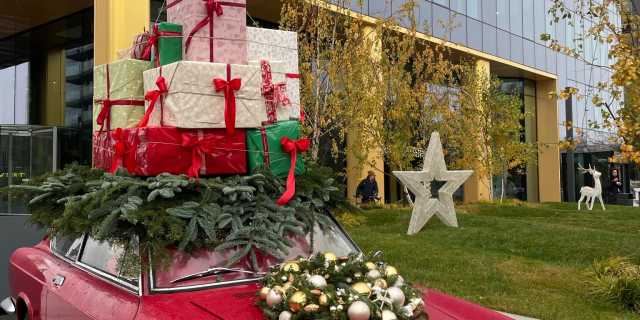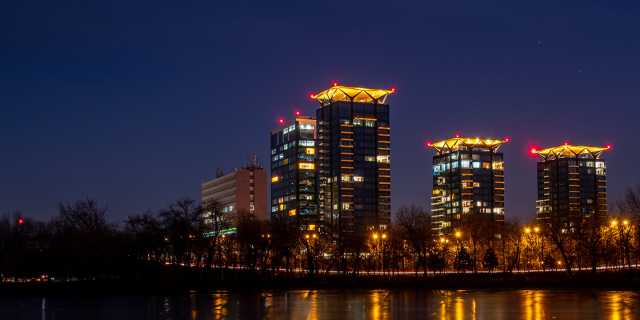The Brancovenesc Hospital
Completed in 1838, after three years of work, the Brâncovenesc Hospital was built at the wish of Safta Brâncoveanu, the wife of Governor Grigore Basarab Brâncoveanu. The activity of the hospital was also financed with her donations, consisting of numerous properties in Bucharest and in the country: thus, the hospital was equipped with 60 beds and was dedicated especially to those without financial means. Later, a medical school was also opened here. Partially destroyed in a fire, the hospital was rebuilt between 1880-1890, this time with a much larger capacity of 240 beds, as well as modern equipment. Among the architectural elements that beautified the building was a dome that housed a hall decorated with busts, from which started an imposing marble staircase. In 1904, the building benefited from an extension and was also the first building in Romania to have its wooden floors replaced with reinforced concrete floors. Here, the first orthopaedic and traumatology clinic in the country would also open in 1949. Although newly renovated, the hospital was demolished in the spring of 1984, on the orders of the communist regime.
The Colței Tower
With 50 meters high, the Colței Tower was once the tallest building in the city. It was built between 1709-1714 and was part of the Colțea Monastery complex, initially serving as a belfry, with a bell weighing around 1,700 kilograms. With influences coming both from the area of fortified monasteries and from German and Swedish architecture, the tower had been elaborately decorated in Brancovenesc style, being equipped with a carved balustrade, mounted on consoles decorated in turn. The first important damage that affected the edifice occurred following the earthquake of 1802, during which several fires broke out and affected many wood buildings, as was the case with the Colței Tower. Later, although restored, it was given the role of a firehouse, until the summer of 1888 when, due to the risk of collapse, it was demolished, despite the protests of the city's inhabitants.
The Splendid Hotel
The Splendid Hall was built in the modernist style, being designed by the architect Arghir Culina. The building was erected on the site where the Orient hotel had previously operated, which in turn had taken the place of the Piteșteanu inn. Completed in 1898, the building benefited, between 1925-1927, from new modernization works, after which it became the hotel with the largest capacity in the city, making 250 rooms available to customers. The one that would surpass it, in 1939, was the Ambasador hotel, equipped with 300 rooms. Another important competitor was the Athénée Palace hotel, located on the opposite side. Splendid met its end in the bombings of 1944, being demolished in the following years.
The Simu Museum
Different from other buildings in the area, the museum on Mercur Street, named after its founder, Anastase Simu, opened its doors to the public in the spring of 1910 and was dedicated to art. Designed by French architect C. Sciky, the museum was modelled after the Greek Erechtheion temple in Athens, with the roof resting on a series of slender yet imposing Ionic columns. The inauguration was attended by important personalities of the time, such as Prince Ferdinand, together with Princess Maria, as well as Minister Spiru Haret. The interior, divided into five rooms, housed hundreds of works collected by Anastase Simu during his many trips to Europe when he used to visit exhibitions, museums, and painting and sculpture workshops. Among them were works by foreign artists, such as Eugéne Delacroix, Pierre-Auguste Renoir, and Gustave Courbet, as well as by many prominent Romanian painters and sculptors, such as Theodor Aman, Nicolae Grigorescu, Ion Andreescu, Ştefan Luchian, Theodor Pallady, and Constantin Brâncuşi. On November 17, 1927, the Simu couple donated the museum to the Ministry of Cults and Arts, committing to continue financing, throughout their lives, the expenses related to its maintenance. Around 1960, the communist regime imposed the demolition of the building to create the necessary space for the construction of housing blocks.
The Matache Măcelaru hall
Demolished in 2013, Matache the Butcher Hall was one of the longest-lived constructions of Bucharest. Built in the 19th century, in two stages – 1887, respectively 1898-1899, the hall was part of the list of historical monuments of the city. Various architectural elements, such as a series of bas-reliefs and arched windows, were added during works carried out in 1940-1941. This is where Loloescu Matache, better known as Matache the Butcher, one of the best-known merchants of the 19th century, carried out his activity.
Data for this article was obtained from muzeulbucurestiului.ro, editiadedimineata.ro, bucuresti-centenar.ro, historia.ro and wikipedia.org. Photo source: Fost.
More on our blog
- One Insider
- Real estate: past, present and future
- Layout and style
- Real estate education
- Free time in Bucharest
- Tourist attractions in Bucharest
- The neighborhoods of Bucharest
Read also






